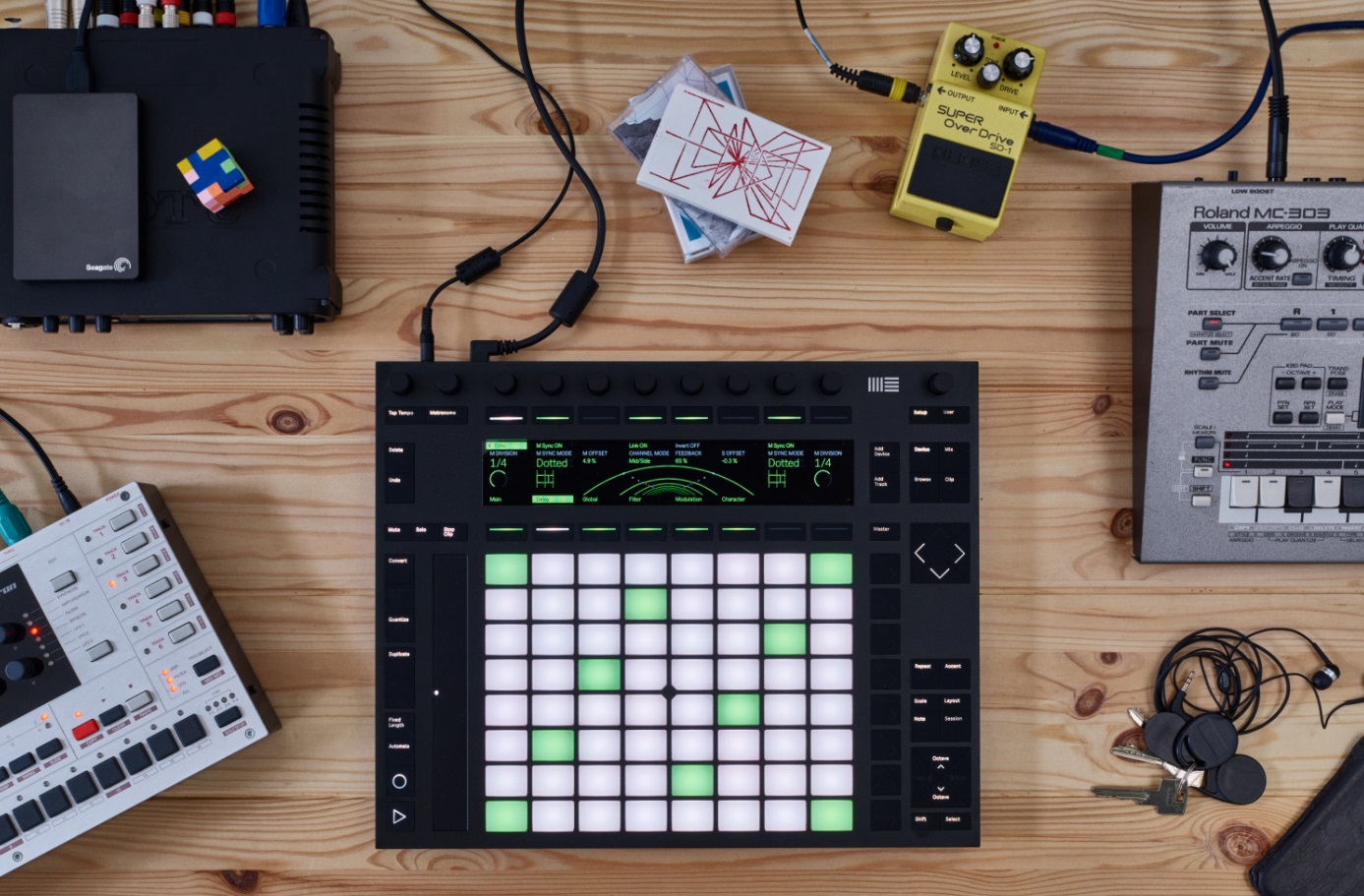
This change doesn’t only make it easier to see what’s going on in your session it also makes editing more immediate. Hitting ‘a’ switches to a new view designed expressly for editing automation, with fades shown only in the title bar of the clip. In the default mode, automation is hidden, but fades are editable and more visible than they were previously. In Live 10, there are two editing modes, toggled by hitting the lower-case ‘a’ key. In older versions of Live, both automation lines and clip fades were always visible, and there were times when you’d end up moving automation points when you meant to do something else. This is partly the result of a whole raft of subtle graphical improvements, but mainly due to changes in the way you work with automation. Speaking of the Arrangement View, the first time you see a session in Live 10 you might think that Ableton have taken features away instead of adding them, because it will look kind of…empty. Up to eight Clips from anywhere in the Session or Arrangement Views can be displayed at once, and even if they’re in different places on the Arrangement timeline, Live 10 will intelligently line them all up in a way that makes musical sense. Now back to your tutorial! Detail: Multiply Your Editing CapabilitiesĪnd talking of existing clips, how many times have you found yourself continually having to switch back and forth between two or more different clips in the Detail editor when you want to figure out why your kick drum beats aren’t quite lining up with the bass line? With Live 10, you’ll never need to do this again, because it’s now possible to edit multiple clips simultaneously in the Detail editor.
Ableton live 10 free#
Not to mention it covers various free sample packs that you can use when starting your journey with Ableton 10 including. It goes into detail around some of our music engineer picks surrounding the new DAW. If you haven't already, be sure to check out our article " Best Ableton Packs". Let's start out with the nitty gritty, this section leads into some of the best sample packs surrounding Ableton specific.

You can even Capture overdubs to existing MIDI clips.

Live has done the job for you: hit the Capture button and your little gem will not only be remembered, but tidied up and neatly fitted to tempo. Whenever you arm a MIDI track, Live 10 is sneakily keeping track of everything you play through it, so any time your bandmate says ‘Whoa! What was that you just played? That was awesome!’ you don’t need to try to play it again. Well, with Capture, that needn’t be a problem. We’ve all had the unfortunate experience of merrily jamming away on a keyboard or MIDI controller, coming up with a stream of great ideas that suddenly seem to vanish from our heads the moment we try to knuckle down and hit A simple idea, but one that tackles a really basic issue with the psychology of music-making: red light syndrome. If so, don’t be too hasty in writing off Live 10, because although some of these new features might not sound all that impressive on paper, they have the potential to make a huge difference to the Live experience.

Ableton live 10 upgrade#
In fact, you might be looking at the list of new features and wondering whether things like “I/O renaming” and “Note chasing” really justify parting with the upgrade price, especially if you’re not a Live Suite user and so don’t get the fancy new Wavetable and Echo devices.
Ableton live 10 software#
So with Live 10, they’ve gone even further, thrown the rulebook out of the window, changed the game and reinvented music software from the ground up… right? Well, no.
Ableton live 10 for free#
Whereas other software companies expect their users to fork out for a paid upgrade every year, or try to force us all onto subscription plans, Ableton have given us a ton of stuff for free in the various point upgrades to Live 9. Three years, in fact - which, if you think about it, is actually pretty generous on Ableton’s part. Ableton Live 10 has been a long time coming.


 0 kommentar(er)
0 kommentar(er)
